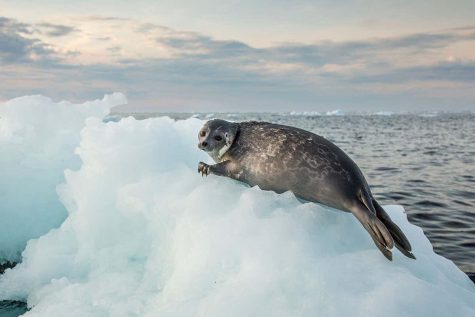The New Silent Killer: Climate Change
November 7, 2019

It all began in when 2002 scientists were faced with a puzzle they couldn’t solve; what caused the deadly virus that led to the death of tens of thousands of harbor seals in the Northern Atlantic Ocean and otters, seals, and sea lions in the Northern Pacific Ocean?
The virus was identified to be a phocine distemper virus, a pathogenic virus for pinniped species, that causes its hosts to have labored breathing, fever, and nervous symptoms. This virus is not believed to affect humans, which further confused scientists because there is zero indication that it had infected animals that could take it to other parts of the world. This situation begs the question “How did a virus thought to have originated in the Atlantic Ocean travel to the Pacific Ocean?”.
Scientists from all over are investigating data collected over the last 15 years in hope of finding an answer. One of those scientists is Tracey Goldstein from the University of California Veterinary School, and she and some of her colleagues combed through the data, examining the ice levels in the Arctic Sea and data from tagged animals to study their migration patterns. With climate change as the culprit, the conclusion drawn from this research was that the melting of the ice caps in the Arctic Sea created a new pathway for the virus to move into a new area, infecting a new population of sea mammals.
There are multiple factors that go into viruses, so now that it had been identified, Goldstein and her colleagues went on to collect biological samples from the mammals. By collecting blood and nasal swabs from otters, seals, and sea lions, from a large region (Southeast Alaska to Russia), the scientists were able to assess the infected populations and find out what strain of the virus they had. After the results, there was a noticeable link between low ice levels and disease outbreaks, leading Goldstein to make the final conclusion that there were new waterways opening up as a result of the melted ice. This allowed infected animals to spread the virus to other species. Another researcher, named Elizabeth Van Wormer, from the University of Nebraska, said that the virus is likely being spread among the animals when they gather to nest and breed, or when they feed in close proximity. This is posing a huge threat to the overall health of the sea because these situations in which the diseases are being spread cannot be prevented or stopped.
This outbreak is having a larger impact on more than just the health of sea mammals. The study has added to growing research that animal and human health are taking hits because of global warming. Toxins being released into the ocean and air are affecting populations 24/7 and are only increasing. Outbreaks of toxic algal blooms (accumulation of algae) that can sicken marine animals and widening the range of ticks that carry potentially devastating diseases are becoming more common, as well. Enabling the transference of the distemper virus across the globe is not the only way that climate change is harming animal health. Steadily rising ocean temperatures along the west coast in the United States have magnified outbreaks of harmful and copious amounts of algal bloom, which can be toxic to marine animals.
The director of veterinary science at The Marine Mammal Center in Sausalito, California, who was not involved with the new research, Shawn Johnson, said that “We’re seeing more and more of these toxic blooms affecting our animals, this is not unique. It’s just another important piece of evidence showing that climate change is impacting the marine mammals all up and down the West Coast.” The study’s findings have implications not only for marine mammal populations but also the delicate balances that exist within ecosystems.
When we see these changes happening in animals, when evidence is handed directly to us, we can’t ignore them, because the impacts on people and the planet are not trailing far behind. The health of people, animals, and the planet are all intertwined and interdependent, meaning they all have to exist in harmony to create the balance we should be living in.
At this rate, our planet is headed for ultimate and permanent chaos within its ecosystem; a total lack of order that will be irreparable. It won’t be long before our environment fails to function due to our lack of regard for the planet, so what’s the next step? Understanding how these diseases and the ecology of diseases are changing in life on land and marine mammals will give us a glimpse into the future, and how we can possibly prevent the worsening of our ecosystem. Or, how we can prepare for the drastic changes that will take place in our environment if the situation is too far gone.

